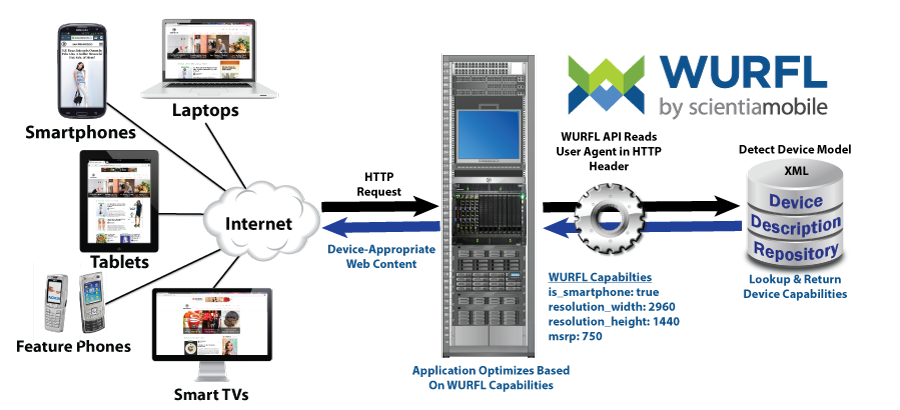Have you ever wondered how the model and characteristics of your phone, TV, or computer are being analyzed and used? Well that’s device detection! It allows a website to create a page that’s optimized for a device model, browser, and operating system. Using device detection, websites can ensure a great user experience and improve performance.
User-agent strings
Device detection analyzes the user agent (UA) string sent by the browser. UAs help identify what device is currently accessing the site. This can include browsers that are running email applications, app web views, operating systems and, most importantly, the device itself. UA strings are designated in the HTTP standard, which says that a UA is made up of multiple product tokens indicating the software and hardware characteristics of the device. Unfortunately, the rules involved in creating UAs aren’t strict. Browser makers and hardware manufacturers, who are responsible for naming the hardware in the UA, are free to format information about the device or the browser as they see fit. And with all the variations of devices, the task of accurately detecting devices is complicated and time consuming enough that simple hacks fail to do the job.
Our solution
A device detection solution must be sophisticated enough correctly interpret UAs, avoid false positives, and stay current with the ever-growing array of device models. ScientiaMobile holds a patent on its WURFL device detection API (application programming interface). By using this API to analyze the UAs from your website, we can provide device intelligence that let’s you optimize your browsing experience.
How device detection works – the process
- UA strings relay the information about your device to a server to be analyzed.
- A request for a web page is then received by a web site, proxy, or content management system.
- The device detection API parses the UA string. It then uses the device manufacturer’s format to identify a specific model. Currently WURFL device detection solution tracks over 53,000 device profiles.
- Once the device model is identified, the API can retrieve over 500 attributes or “capabilities” of that device model.
- Within microseconds, this device intelligence is returned to the requesting application or server. Developers can use this device intelligence to optimize the website. This means sites can adapt to screen size, support navigation, achieve superior performance, and generate a great user experience.
Tl:dr version of device detection
Device detection analyzes user-agents to identify a device model’s attributes and capabilities so websites can adapt display, navigation, and content in real time.
by Rahul Reddy









